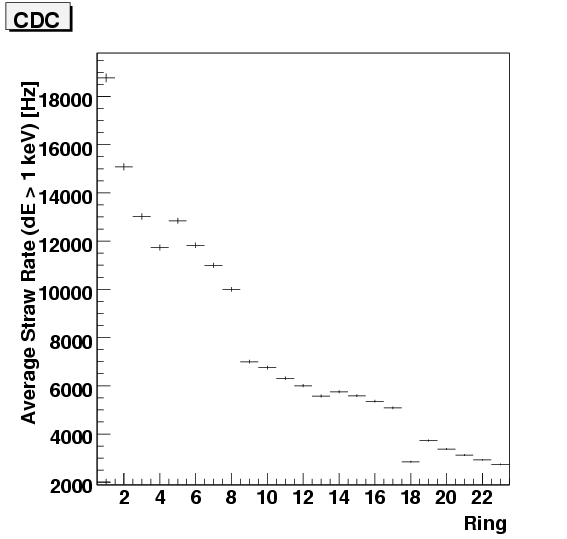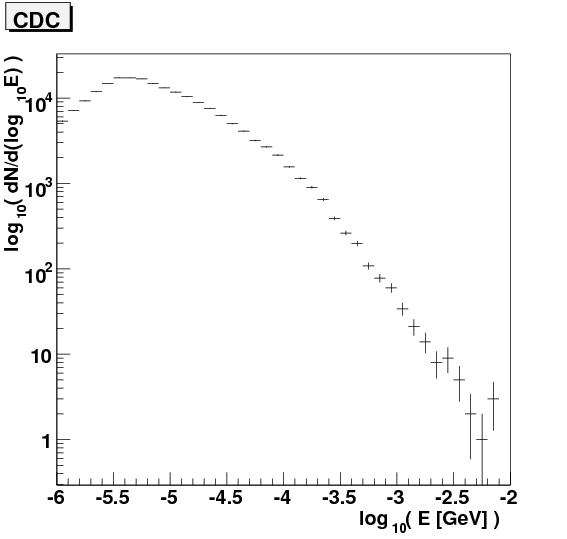Difference between revisions of "CDC Backgrounds"
From GlueXWiki
| Line 9: | Line 9: | ||
* Maximum Number of Hits (per Event): 100 | * Maximum Number of Hits (per Event): 100 | ||
| + | Items for Discussion: | ||
| + | |||
| + | * Should stereo geometry be so noticeable in background rate? If the noise source is far upstream, then stereo straws will present a large cross section to the noise source than axial straws. | ||
| + | |||
| + | == Plots == | ||
[[Image:cdc_rate_v_ring.jpg|frame|center|The average background rate per straw in Hz as a function of ring number in the CDC.]] | [[Image:cdc_rate_v_ring.jpg|frame|center|The average background rate per straw in Hz as a function of ring number in the CDC.]] | ||
[[Image:cdc_energy.jpg|frame|center|A double-log plot of the energy of all hits in the CDC. The spectrum cuts off at 1 keV due to the GEANT threshold.]] | [[Image:cdc_energy.jpg|frame|center|A double-log plot of the energy of all hits in the CDC. The spectrum cuts off at 1 keV due to the GEANT threshold.]] | ||
Revision as of 15:43, 15 January 2007
Back to Background Rate Studies
CDC
Detector Configuration:
- Double-Hit Resolution: 250 ns
- Threshold: 1 keV
- Maximum Number of Hits (per Event): 100
Items for Discussion:
- Should stereo geometry be so noticeable in background rate? If the noise source is far upstream, then stereo straws will present a large cross section to the noise source than axial straws.

